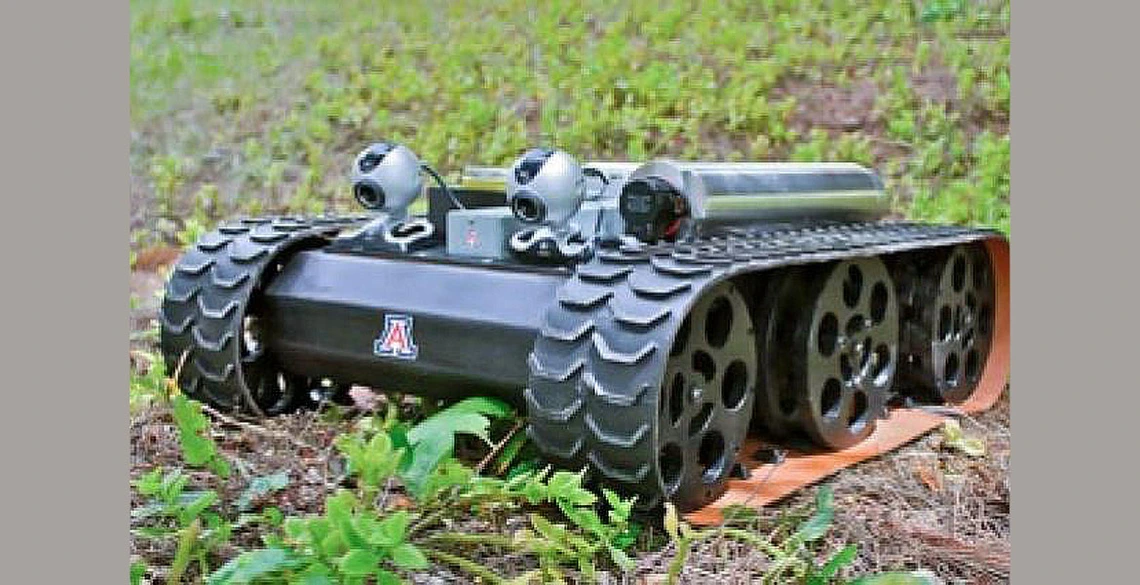UA Professor’s Autonomous Robotic Space Exploration Research Featured in Science Magazine

Smarter than the average robot: One of Fink's new generation of planetary rovers. (Photo: Wolfgang Fink/Mark A. Tarbell)
Science magazine recently published an article featuring UA professor Wolfgang Fink's research on using intelligent robots for planetary exploration.
Science was founded in 1880 using seed money provided by Thomas Edison, and has grown into the world's most widely read general science journal, with more than a million readers worldwide.
The main thrust of the July 30 Science article, "Making Smarter, Savvier Robots" [PDF] by Sam Kean, was that "robots are pretty dumb" and must rely on scientists back on Earth to control their exploratory missions. Kean pointed out that only a few dozen scientists are developing robots with true high-level independence that enables them to avoid danger while investigating planetary features of their own choosing.
One of those scientists is Wolfgang Fink, associate professor of electrical and computer engineering and biomedical engineering, who holds the Edward and Maria Keonjian Endowed Chair in the College of Engineering, and directs the Visual and Autonomous Exploration Systems Research Laboratory. He also has a joint appointment in the UA department of ophthalmology and vision science.
In the article, Fink gave an example that highlights the problem with current missions. He said that an airship or blimp flying through the atmosphere of Saturn's moon Titan would have to negotiate hazards in real time. The problem is that radio waves carrying instructions from mission control on Earth would take 90 minutes to arrive. Fink noted that if the blimp was heading for a mountain range, it could hardly say, "I'm flying into a mountain range. Please advise," and then wait 90 minutes for a reply.
Fink envisions future planetary research being conducted by a hierarchy of intelligent, autonomous robots that could include satellites, airships or blimps, and a fleet of rovers or lake landers. Fink's term for this concept is "Tier-Scalable Reconnaissance." The idea is that an orbiting satellite would direct atmospheric blimps to scan potentially interesting areas of a planet's surface. The blimps would then order surface-based rovers to investigate geological features in detail and collect samples in situ.
Communication between the tiers in this robotic hierarchy would only take milliseconds, not hours, and the satellite at the top of the chain of command would make intelligent decisions about which sites were safest or might yield the most interesting results. Fink's aim is to endow robots with curiosity. He wants them to want to investigate certain situations and environments, and then learn from those investigations so they can make increasingly smarter choices about where to go and what to investigate next.
"We currently have rovers, boats, and soon blimps on the UA campus ready to test," said Fink. "The five rovers run on tank-like caterpillar tracks and carry a payload of 40 pounds each, so they are the rugged outdoor version of the previous generation of rovers we used to test artificial retinas." These retinal implant test robots were covered by Arizona Engineer Online and UA News in a November 2009 story: "Engineers Will Create Planetary Rover From Retinal Implant Test Robot."
Fink and his team are currently building a test bed for Tier-Scalable Reconnaissance and plan to test their planetary exploration vehicles around campus before moving out to the desert surrounding Tucson.


